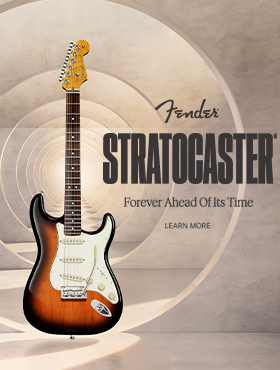
It’s timely being Melbourne Guitar Show week that Ray Carlton has chosen to guide us through the journey of purchasing a new guitar! Over to you Ray!
Before buying it is worth working through a few questions which can be a useful in achieving a positive outcome. Best to avoid owning another guitar that sits on the rack unplayed
• What do I want the new acquisition to achieve?
• What type of guitar will fulfil this outcome?
• How do I intend to buy it?
What do you want to achieve?
There are many valid reasons to buy a guitar and having a specific outcome in mind will dictate the type of guitar that is most likely to work well. Music genre and playing style will colour your choice. For example if you want to play chicken pickin’ country you won’t be looking at a jazz box with a single neck pickup.
Copies of classic models
There is much in favour of buying a cheaper copy of a classic model. Many sound just great out of the box and are built equally as well as big name USA made classics. A copy model is more easily replaced if stolen or damaged beyond repair. A carefully chosen quartet of decent copies can be bought for the price of a single top of the range USA model. They can be modified if you want and it won’t impact resale. Apart from the foregoing your playing may not be at a level where you can easily tell the difference between an expensive original and a copy.
Top of the range
To many players the genuine big name classic model has a compelling almost mystical attraction. There is nothing like the thrill of playing a top of the line guitar and it will positively reflect in your playing. Whether it is a reproduction or a genuine vintage piece, great tone is guaranteed. Resale values hold up well and if you buy from a limited run or a model that is discontinued, there is a chance price may appreciate. If money is no object there is no reason to cheap out on your new guitar.
If you buy an expensive guitar there is however no guarantee that things won’t go wrong. A guitar is a relatively simple machine and parts break irrespective of where they were made and how much they cost.
Used or new?
Guitars bought new from reputable retailers are guaranteed to be perfect and if they prove not to be, can be exchanged in some cases or repaired. The warranty accounts for the difference in price between used and new instruments. If you like a perfect guitar with no blemishes this is the way to go. There are usually plenty available to choose from. Be aware any guitar used or new may need a set up to suit your style of playing.
Always buy used guitars from a reputable retailer. They may provide a short warranty period which will enable you to have it checked by your tech. Some dealers may allow you to try a guitar for a short period with a money back guarantee on safe return. In such cases you will be responsible for freight both ways. For an expensive purchase this is well worth considering
Private sales are not recommended unless you know the history of the guitar and even better, the seller is a friend. Never buy a guitar new or used that you can’t try out. Buying from popular, online market websites is fraught with dangers. The photograph below shows that “slightly damaged” can mean many things, as the buyer of this rare, vintage bass purchased on the biggest of these sites found out.

Custom built
A custom build by a well known luthier can be a great way to get a top quality guitar built to your specifications. Some builders will even create a new design and include whatever hardware you specify. Most have set models based on classic designs which include many options not available in “off the shelf” brand name guitars. Some builders will put together classic designs using high quality aftermarket parts that compare very favourably to branded “custom shop” models in quality but at lower price points. Generally a hand-built guitar will not be any more expensive than top of the range custom shop or VOS models.
The disadvantages of having a hand built instrument are usually a long wait time and are expensive when compared to most factory made guitars. Resale can be problematic with a little known brand. You may be required to pay a non-refundable deposit.
How to spot a good guitar
The best guitar to buy is the one that feels and sounds great. It should stay in tune and a bond will immediately be apparent. If you spend most of your time trying to get it in tune, fiddling with the controls or fighting the action you should look at another guitar. It may be the exact brand / model / colour you are burning to buy but will be a waste of money unless you are prepared to spend more to have it put right. After spending money it still may not be right. First impressions are critical and that first half hour will tell you of it is a keeper or not. You need to be determined to keep on looking until you find one that you bond with.
 How straight is the neck
How straight is the neck
Always sight down the neck from both edges of the nut to ensure it is close to straight and is not warped. Buying a guitar with a neck that has significant up bow or back bow [bending upward or downward] can indicate significant problems. Ask the seller to slack off the strings and adjust it. If that can’t be done, don’t buy until you can have it checked over by a tech of your choice. If the seller decides to wait for someone less picky, leave it to be their problem.
Frets and finger board
Always pull aside the strings and look carefully at the frets to ensure there is no significant wear. While you are at it check that there are no fingernail gouges in the fingerboard. It is all repairable but the take cost of doing the work into account. A fret level and crown will take out minor ruts and will cost up to $200 or so. Excessive wear will require a refret costing anywhere from $350 to $750. Gouges in the finger board will add to the cost.

With the guitar plugged into an amp, control knobs should operate smoothly without crackling. You should be able to hold the output jack and wiggle it around without loud crackling or popping noises. The selector switch should move smoothly and switch pickups without dead spots or crackling. If one pickup doesn’t work it is more likely to be a dead pickup that a faulty switch. Except for pickup replacement electronics are a cheap and easy fix.
There’s a lot to consider when purchasing a new guitar. Come down to the Melbourne Guitar Show and speak with distributors of both high end and budget guitars, second hand guitars and chat with some local luthiers too. There’s enough guitars and guitar knowledge going around to make your head spin. Good luck!
Got a question for Ray? Ask away!


